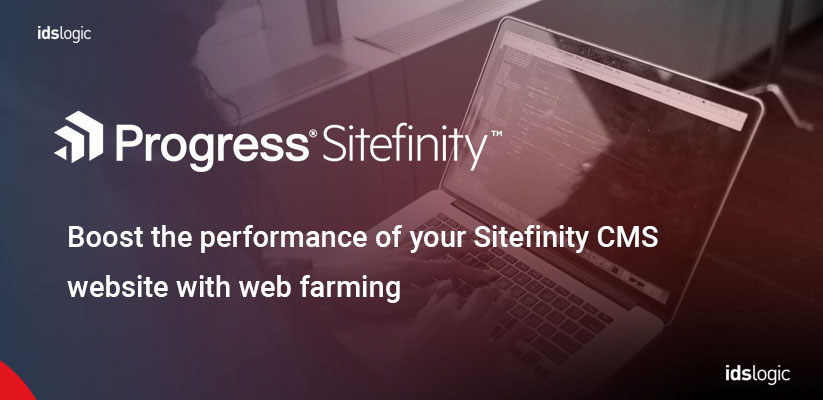
Boost the Performance of Your Sitefinity CMS Website with Web Farming
Sitefinity has always come up with the latest versions at frequent intervals, which has offered rich technology features, security patches and previous errors remedies. The CMS is highly reliable, and business owners use it to create their websites and run various operations seamlessly. Web farming Sitefinity can accomplish more and help you to improve your user experience in a better manner.
A CMS in general helps to publish, manage and control the web content of a site and today most business organizations are using a CMS to accomplish their business goals.
What is a Web Farm?
A web farm is a collection of servers that is housed in a single location, which is called a data center for functioning as a coordinated group that can be managed and controlled easily. The farm is used to accomplish the needs that a single machine cannot provide like serving a huge number of people on a website or for any specific application or for providing more resources in a cloud environment.
A web farm also known as the web server farm is a web page using more than one computer or server to deliver the content.
Web farming is distributed hosting and web traffic should be directed to a load balancer that relays the requests to any virtual machines in the infrastructure.
The Benefits of Using Web farming with Sitefinity CMS Development:
Scalability:
The most prominent advantage to load balancing is the ability to add or remover the recourses on the fly. The resources are available in the virtual machine and are fixed while the users demand may fluctuate. So, when there is an excess demand and it exceeds what is available, there is a possibility that your Sitefinity CMS development website may go down or not perform as expected.
And during high traffic moments like events or conferences, these new virtual machines can handle the additional load easily. The load balancer can be easily configured to the direct traffic to the new resources in real time, so that the users don’t experience any interruption in their service.
Up-time:
Even if your Sitefinity server works perfectly, it needs Sitefinity maintenance and support services, the operating system may require to recompile your site or there may be changes needed to stop interrupting service. If your Sitefinity CMS is running without a load balancer, then all these might result in downtime and if the issue is something serious, then your site may be down for hours or even longer resulting to huge loss.
Also Read: Sitefinity 13.0: More Power in the Hands of Marketers and Publishers
A load balancer is specially designed so that it can detect all the issues, direct the traffic away from the problematic virtual machine and then restore the traffic once the server is restoring and starts working.
Longevity:
Web farming offers a more modular approach to your Sitefinity web infrastructure and the configurations can make things easier for the older devices, so that it can be easily replaced by the new virtual machine. Some hosting options like the App Services can now be easily integrated into the infrastructure and this means that the DNS updated are reduced.
High Security:
The backend access to your Sitefinity website can easily be disabled ad with numerous instances running, you can now choose to allow the public access only to those disabled nodes and any other layer of security to the node that can easily make the changes or edits.
With web farming, you can now take your Sitefinity website to a next level and boost the performance of your site.
Also Read: How Sitefinity Has Effectively Evolved To Meet the Changing Face of CMS